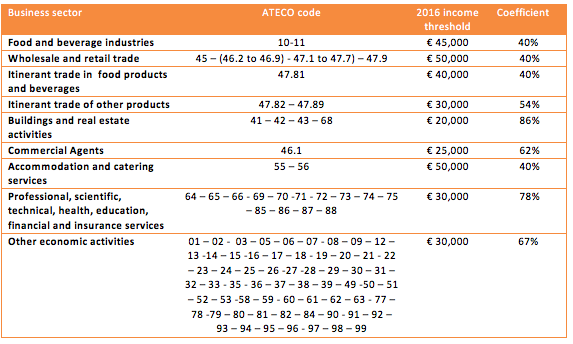Benefit societies are a particular legal form of enterprise that allows a company to balance the practical purpose of the business activity to achieve a common benefit to which a part of the profits destined to the shareholders is assigned. Let’s take a closer look at what this is all about.
The main peculiarity of benefits companies consists of balancing the interests of shareholders (to achieve profit) with public and social welfare. In other words, benefit societies pursue, in the exercise of business activity, and the purpose of profit also one or more purposes of common benefit, which can have a responsible, sustainable, and transparent impact on people, environment, and society.
Therefore, the management of this type of company requires a more outstanding balance between two interests, namely, the interest of profit and the community’s interest, of common benefit. Let us take a closer look at the characteristics of these companies.
What are Benefit Societies?
The birth of benefit corporations occurred in the United States in 2010, under “Benefit Corporation” (B Corp). The main objective of this type of company is to balance the goals of profit with the community’s public interest.
More in detail, benefit societies pursue in the exercise of the business activity and the purpose of profit also one or more purposes of common benefit.
The essential elements for the establishment of this type of company are:
- The profit motive;
- The standard benefit, which we’ll talk about later.
Then, we can summarize that benefits companies differ from ordinary corporations for the pursuit, along with a profit-making economic activity, of a second purpose related to the support of people, communities, territories, environment, cultural and social activities. Therefore, the objective of these companies is only partly linked to profit, as they aim to protect and support worthy interests within the community in which they are located.
What is the expected benefit to be protected?
As you may have noticed, the characteristic element of society’s benefits is the achievement, together with profit, of a “common benefit.” But what is this common benefit, and how can we identify it?
According to the provisions of the rule mentioned above, common benefit means the pursuit of economic activity, with positive effects, or the reduction of adverse effects, in the albites listed in the previous paragraph.
In particular, the charitable purposes pursued by the company must be indicated explicitly in the corporate sense. Moreover, they must be concretely followed by means of management that achieves a substantial balance between the interests of the shareholders and those of the persons on whom the company’s activities may impact.
It should be noted that the expected benefit to be pursued and indicated in the corporate purpose does not necessarily have to be related to the main activity carried out by the company. It can also be a general interest (e.g., growth of social welfare or a community, conservation and recovery of artistic and cultural heritage, support for associations in the area, protection of the environment or human health, etc.).
Types of benefit companies
What types of benefit societies exist?
All types of companies provided for by the Civil Code can use the model of the benefits company, namely, the following:
- Profit-making companies (Article 2247 of the Italian Civil Code):
- simple company;
- general partnership;
- limited partnership;
- corporation;
- limited liability company;
- limited partnership;
- Companies with mutual purposes (art. 2511 Civil Code)
- Cooperative societies.
Therefore, we can summarise that benefits companies do not constitute an autonomous genre with their cause but belong to the typical companies governed by Titles V and VI of Book V of the Civil Code.
Therefore, any company can become a benefit; however, it is necessary to go to a notary to change its statute and corporate purpose and indicate the objectives of the new company and how it intends to pursue them.
Simplified limited liability companies cannot qualify as benefit companies since their memorandum of association is drawn up in compliance with the standardized model, which does not allow for its amendment. Similarly, social cooperatives and social enterprises cannot be qualified as benefit societies.
Advertising obligations of the benefit company
Benefits companies, from incorporation or transformation, can include next to the company name the specification “benefit company” or the abbreviation “S.B..” In this way, the company can publish and make explicit its name, using it in the securities issued, in the corporate documentation, and in communications to third parties (art. 1 co. 379 third sentence of Law no. 208/2015).
In this way, all foreign stakeholders can immediately recognize that they are dealing with a benefits company.
Are there specific responsibilities for Benefit Societies?
Benefits companies must appoint an impact manager, i.e. a manager responsible for the benefit scope to ensure that the company pursues its stated purpose of common benefit. This is what Article 1, paragraph 380 of Law no. 208/15 provides. The responsible person must be chosen by the administrative body abroad or within the entity (even among the directors themselves).
Specifics for the control body of benefit companies
There is an extension of the tasks and functions that are incumbent on any appointed supervisory body in the benefits companies. The latter is called upon to assess the directors’ actions concerning the balancing of the shareholders’ interest and the aims of the expected benefit. In particular, the task is to evaluate the person in charge of pursuing the common goal. This specific task is part of assessing the adequacy of the company’s organizational and administrative/accounting structure.
The report on the pursuit of the common good
In addition, benefit companies must submit an impact report attached to the company’s financial statements (art. 1, paragraph 382, Law no. 208/15). The impact assessment must be performed using the assessment standard developed by a third party entity and must include:
- Governance, to assess the degree of transparency and accountability of the company in the pursuit of its aims of common benefit;
- Employee Relations;
- Relationships with other stakeholders;
- Society’s impacts on the environment.
The impact report must be subject to appropriate publicity. It must be:
- Attached to the company financial statements (art. 1, paragraph 382 of Law no. 208/2015);
- Published on the company’s website, where existing (art. 1, paragraph 383, first sentence, of Law no. 208/2015). In addition, benefit companies are subject to the Control of the Competition and Market Authority (AGCM).
Conclusions
At least at the moment, the regulations on benefit companies do not provide any particular advantage for establishing these companies in terms of taxes, contributions, or benefits. This means that, in essence, the establishment of a company of this type is only linked to the will of the shareholders to show to stakeholders outside the company their willingness to allocate part of the company profits to the pursuit of interests and purposes worthy of protection for the community.







